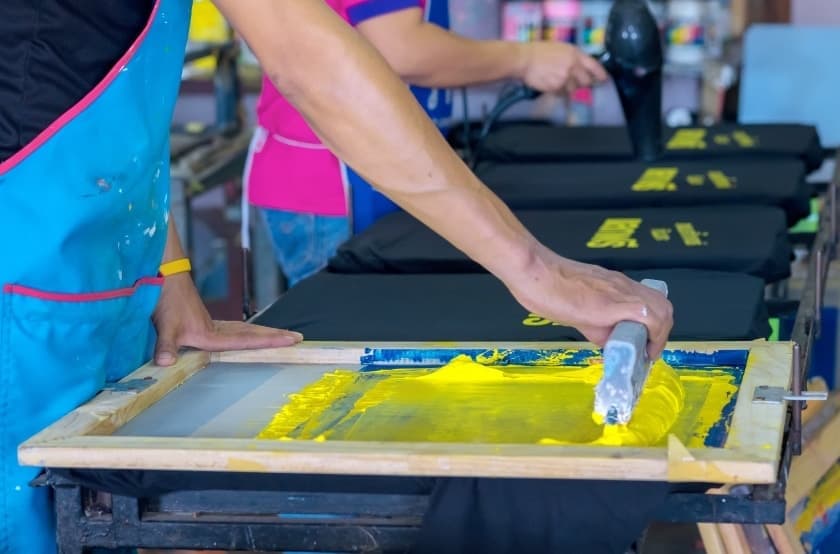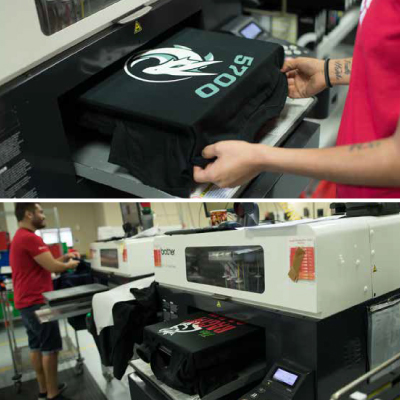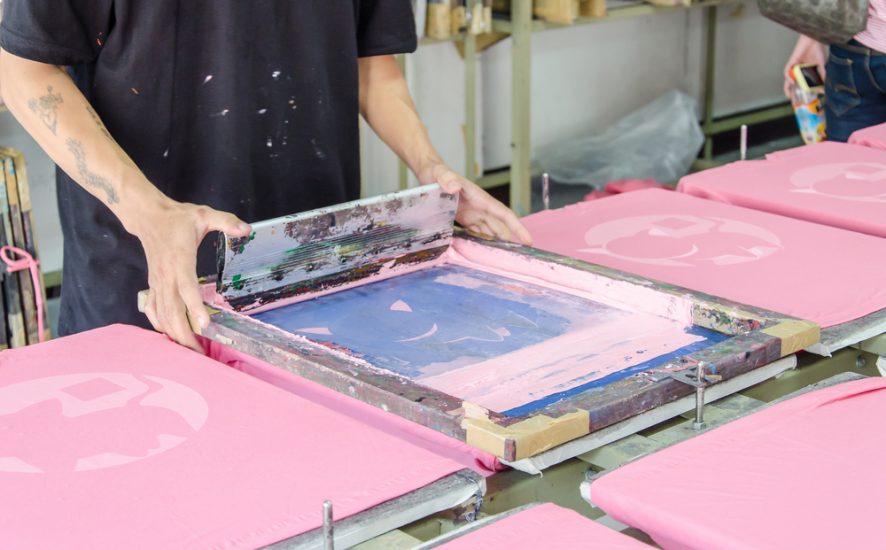Some Ideas on Tx Tees You Need To Know
The Ultimate Guide To Tx Tees
Table of ContentsThe Main Principles Of Tx Tees Facts About Tx Tees RevealedThe Single Strategy To Use For Tx TeesIndicators on Tx Tees You Should KnowSome Known Factual Statements About Tx Tees Not known Facts About Tx TeesMore About Tx Tees
That brings your total to approximately $1,900 gross and shipping. Build up other prices, like the variety of utilities it requires to run the shop and the price of ink and emulsion per design. custom t-shirt design. Take the print below for instance. This is a one-color image, so the expense of ink per t-shirt is approximately 20 cents.The emulsion ought to just be a couple of cents since you 'd only require to layer one display for this task. Normally, printers attempt to make up to 45% revenue on a print task.

With DTF, you can print a handful of shirts, or just one. Both screen printing and DTF have their specific niches in the world.
5 Easy Facts About Tx Tees Shown
The ideal way to understand? Ask about and see what printing shop like yours are doing. t-shirt printing. Try both out and see which you like much better
When you're selecting what kind of printing approach to make use of for publishing your art work designs on your garments, it is essential that you know the differences between these two techniques so you can make best use of outcomes while minimizing costs. Screen printing is the most commonly used technique for publishing layouts on fabrics.
DTG printing is additionally recognized as place or straight to garment printing since it prints only what is needed as opposed to making a display as display printers do. https://www.metal-archives.com/users/txtees02. Display printing works by display filler squeegee screen printing ink screen mesh display, after that moving the image to garment using warmth and/or pressure
The DTG printer utilizes unique dye-sublimation inks that are applied right into a pre-designed image by a digital printing system. The inks come to be part of the textile, allowing for lively shades and outstanding detail. It's likewise referred to as spot or direct to garment printing due to the fact that it prints only what is required rather of making a screen as screen printers do.
The Basic Principles Of Tx Tees
Initially, it's much quicker - you can publish a fullcolor photo in mins, as opposed to hours for screen printing. Second, there's no set up time or expenses included - you can print any type of design you like, without having to create a screen. Third, there's no waste - due to the fact that display printers display print one layout each time, they need to screen each color separately.
The paper is very pricey and can just be made use of when. Once it's printed on, it needs to be discarded. - The initial acquisition rate is reduced than the in advance investment of DTG printers- You can print multi-color layouts one display each time instead of needing to publish each color separately like DTG printing.

The Of Tx Tees
However, as opposed to making use of display mesh as screen printers do, dye sublimation printers utilize laser modern technology to transfer your pictures onto garments or paper. A warm procedure moves the color from its solid-state straight right into the gas phase which in turn merges it onto material substratums when they are swiftly warmed to heats under high pressure.
Sublimation printing is environment-friendly. It makes use of much less water than screenprinting, and due to the fact that it does not involve making use of hazardous solvents, it's risk-free for all custom monograming kinds of garments. The color sublimation inks are also unsmelling when healed, unlike display printers that make use of hazardous chemicals during the screen printing process that leave behind an unpleasant smell.
They additionally conserve cash on pricey tools like direct exposure devices considering that color sublimation printers don't need a UV exposure unit or a flash cure oven that is typically used in display printing (screen printer). What is direct to garment printing (DTG Printing)? DTG printing is a digital screenprinting procedure that publishes straight onto fabric using specialized inkjet printers
The Only Guide to Tx Tees
DTG printing supplies lots of benefits over traditional screenprinting, consisting of the capability to print photo high quality images, better color vibrancy, and the capacity to publish designs on darker fabrics. DTG printers work by warming the fabric ink up until it develops into a gas. The gas then penetrates the textile, bonding with the fibers to produce a permanent print.

Display printers merely prepare their display then start printing until they lack item or ink.- There is a variety of knowledgeable screen printers all over the world, which can be helpful for newbies. - It's a slower procedure - screen printers frequently have to await the ink to completely dry before they can print the following shade- Screen printers require hand-operated labor, so there's a greater knowing curve and it takes longer to generate a high-grade layout- Screen printing isn't as accurate as DTG printing, so you might get some "bleeding" of shades from one part of the image onto an additional if not done properly.
Tx Tees for Beginners
Instead of making use of screen mesh as screen printers do, color sublimation printers use laser innovation to move your images onto garments or paper. A warm procedure transfers the dye from its solid-state straight right into the gas phase which consequently integrates it onto fabric substratums when they are rapidly heated up to heats under high pressure.
Sublimation printing is environmentally friendly. It makes use of much less water than screenprinting, and since it does not involve making use of harmful solvents, it's risk-free for all sorts of apparel. The color sublimation inks are also odor-free when healed, unlike screen printers that make use of hazardous chemicals throughout the screen printing procedure that leave an unpleasant smell.
They likewise save cash on pricey equipment like exposure systems given that color sublimation printers don't require a UV exposure system or a flash treatment stove that is normally utilized in display printing. What is direct to garment printing (DTG Printing)? DTG printing is an electronic screenprinting procedure that publishes directly onto material utilizing specialized inkjet printers.
The Single Strategy To Use For Tx Tees
DTG printing uses lots of benefits over standard screenprinting, consisting of the capability to print photo top quality pictures, higher color vibrancy, and the capacity to publish styles on darker fabrics. DTG printers function by heating up the textile ink till it becomes a gas. The gas then penetrates the material, bonding with the fibers to produce a permanent print.